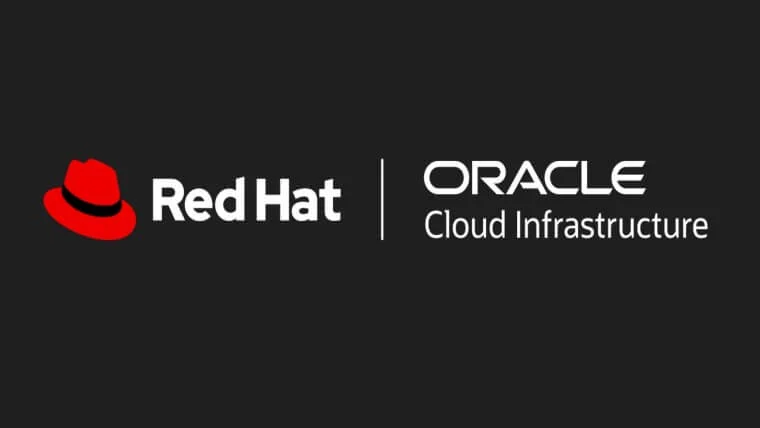It’s not every day that a new software system comes with a grand unveiling, but MetaERP from Chinese tech giant Huawei isn’t your average entry in the business of enterprise resource planning, otherwise known as ERP. As Huawei tells ERP Today in its only international interview regarding the project, “without U.S. sanctions, Huawei had never considered developing its own ERP.”
When the Trump administration went hardline on Chinese and American business relations at the end of the last decade, Huawei found itself at risk of having the plug pulled on its entire worldwide business system. Since the late 1990s, Huawei’s major ERP considerations were provided by the once-California, now Texas-headquartered Oracle, a global giant in the vendor space. The relationship between Huawei and Oracle, the latter of which declined to comment on the matter to ERP Today, was a strong one. Neither wanted to lose what was on the line: a major supplier for Huawei and a major customer in the fruitful Chinese market for Oracle.
“Huawei has been a loyal and one of the largest ERP users globally for decades, and we incorporated the system into most parts of the business,” as Huawei tells us.
ERP is the lifeblood of any enterprise serious about its business. A decent ERP system integrates financial and business accounting with HR, customer records and supply chain management. Therefore, the internal fanfare that occurred last month around MetaERP, Huawei’s response to losing Oracle, makes a lot of sense. An awards ceremony marked the unveiling of the software, in the Huawei campus based in the city of Dongguan, known as both Xi Liu Bei Po Village and Huawei Ox Horn Campus. Photos from the event show it taking place in front of the campus’s grand European-style architecture, the perfect spot for the kind of Wes Anderson homage currently trending on unstoppably popular social media platform TikTok.
Considering the challenges of creating MetaERP behind the Huawei curtains, it’s easy to see why celebration – and probably a massive sense of relief – took over the town square of Xi Liu Bei Po.
But elsewhere in the world – perhaps in the executive suites of U.S. & European ERP giants – a collective shiver may have run down the spines of top brass. MetaERP, while designed by and for Huawei and its internal organization, could very well prove to be a TikTok-scale dragonslayer in the enterprise tech field. In our interview, ERP Today explored the commercial possibility of the tech – but to appreciate the answers depends on first understanding the history behind MetaERP.
Huawei and the enterprise ecosystem
Discussing Oracle shouldn’t distract from the fact China has ERP vendors of its own. Some are named in recent thought leadership from MetaERP’s project leader Tao Jingwen, the director and president of Huawei’s Quality, Business Process & IT Management department: Kingdee and Yonyou, for example. Others who helped Jingwen and team bring MetaERP to life include Yuannian (financial software), Qi An Xin (cybersec), Kingsoft (cloud) and Yonghong (business intelligence).
“We worked with many talented partners and individuals, learned a lot on the way and overcame many challenges,” Huawei tells ERP Today. “It’s important to mention our success is inseparable from people who work side by side with Huawei.”
Unlike Huawei, none of these partnering brands are household names on the world stage, and perhaps many are unknown even to Chinese exec suites. Despite recent sanctions, Huawei is still known as a leader in hardware, and remains the world’s second-biggest smartphone maker with a valuation of US$92.6bn to its headlining name.
Considering its technology prowess, the company’s previous reliance on North American software may surprise some. Such dependency meant Jingwen’s project was no walk in the village park, especially as, in his words, Huawei was notified that its supply and services would be suspended just a few days after the fateful day in May, 2019 when the U.S. added Huawei to the Entity List. This bore significant impact on the brand’s daily business, and had consequences on its entire ERP system, including hardware supply, upgrading software systems and O&M support services.
“We faced many challenges to prevent management from retrogression; for example, how to reconstruct the IT architecture,” ERP Today learns in its interview. “How do we inherit Huawei’s years of management and operation experience (for example)? How to reconstruct the IT architecture to meet Huawei’s management requirements for digital transformation? How to overcome multiple technical problems such as high concurrency, high performance and high reliability?
“With so many challenges and no prior experiences to lean on, we put a strong focus on research and development. We saw this as the best way out under our circumstances.”
This is where Huawei’s partners came in, helping to construct an ERP system capable of supporting Huawei’s operations and its 207,000 employees in more than 170 countries and regions. The guiding principles were, according to a press release, “to build the simplest possible architecture with the best possible quality, delivering the best possible experience at the lowest possible costs.”
Within MetaERP is support for the major business processes Huawei carries out like any other major company: finance, manufacturing and PSI, alongside a management platform for decision-making and operation for employees.
The project involved several thousand working on what Huawei has described as “the most extensive and complex transformation project” it has ever undertaken. The result? An ERP system which handles 100 percent of Huawei’s business scenarios and 80 percent of its business volume. MetaERP, it is said, has also passed the tests of monthly, quarterly and yearly settlements, while “ensuring zero faults, zero delays, and zero accounting adjustments”.
Meta-risk averse
It should be noted that MetaERP’s name has nothing to do with the metaverse or related fads. Instead, it’s all about meta information: the proprietary software adopts cloud-native, multi-tenant metadata and real-time intelligence.
To put it simply, the tech is more meta-risk averse than anything metaverse. According to Huawei, the metadata multi-tenant architecture is used to standardize metadata assets such as service objects, data entities and function logic points. Tenants can flexibly orchestrate metadata assets to quickly respond to service requirements, alongside real-time intelligent technologies in order to make good use of data.
“For example,” we are told, “multiple AI models are preset to achieve scientific and efficient risk control and operation decision-making”.
By using cloud-native architecture with strong computing power to implement rapid global deployment, the system can automatically adapt to service traffic changes, and “easily copes with tens of millions of traffic peaks”.
“GaussDB and GTM-Lite technology are used to support the horizontal expansion of computing and storage resources,” it is revealed to us. “Read nodes can be dynamically scaled based on service pressures. Read throughput increases by two times, and data synchronization latency between primary and read nodes is within seconds. This helps to cope with the pressure of massive data storage and concurrent access to MetaERP and support ultra-large-scale services.”
The tech here seems to surpass Oracle’s original considerations. It might be more reasonable to assume it replaces all of the historical provisions from Oracle, which ERP Today was unable to determine at time of writing. Those provisions had been in place a few years after Huawei implemented the building blocks with a manufacturing resource planning (MRP) planning system in 1996.
According to our interview, MetaERP is “a future-oriented next-generation enterprise core business system”. Either way, this is a strong software move from a brand more hardwired in the hardware realm. But there is precedent: it wasn’t too long ago that Huawei implemented its own operating system, HarmonyOS, to replace Google Android and Apple’s iOS, something MetaERP seemingly made a relative walk in the park.
The 92-billion dollar question
There is also previous precedent from Chinese tech in replacing U.S. systems. Alibaba arguably set the scene when it began removing hardware and software from Oracle, IBM and EMC as early as 2014.
Should U.S. Big Tech be worried about its Chinese dominance? Not necessarily. Industry research from China’s Tenba Group shows that SAP and Oracle lead in first and second positions in the country with over 50 percent combined share in the ERP market for larger enterprises. With Chinese SMEs it’s a different story, as Huawei partner, the previously mentioned Yonyou, leads the way in this sector by 30 percent; perhaps SAP and Oracle might need to start looking at entry costs if it wants to reach the country’s wider market.
Outside of China, it’s unlikely that SMEs or enterprise giants will look to MetaERP as a replacement for SAP and Big Red, even if a tech giant like Huawei, say, offered a cheaper proposition directly or via a international subsidiary such as Honor, which the company owned before 2020.
While the social media likes of Meta may indeed find existential threat from Chinese companies like Douyin and the associated TikTok platform – which still faces calls for bans despite its recent “Americanization” – MetaERP is unlikely to eat anyone’s lunch any time soon.
“I cannot see the market being very large for it if Huawei sold MetaERP commercially,” believes Deloitte director Steven Ingram. “I really don’t think it will pose any threat to SAP, Oracle etc as there just would not be the scale of customers willing to take it.”
This, Ingram says, is due to the sanctions placed on Huawei, making it “massively unlikely” that customers would be interested, especially when it comes to data safeguarding.
“The general lack of transparency that you get in all ERP systems – where you tend to take a bit of a ‘black box’ approach to the processes – makes it all the more unlikely,” he tells ERP Today.
“It is one thing to build in-house software, another one to become an independent software vendor in the ERP field,” chimes in Holger Mueller, vice president and principal analyst at Constellation Research. “The first question is, does the system just meet Huawei demands – or more broader demands? And then, how will Huawei react to additional requirements? The creation and support of these is what makes an ISV, and that is not usual in the DNA and funding of these efforts.”
Huawei has already implied that currently it has no plans to commercialize MetaERP. The reason why though isn’t necessarily because of geopolitics or market share; as we learn, it’s simply because of its precise nature as a solution:
“MetaERP is only meant for Huawei internal usage.”
This is the story which may get missed in the heady narrative during this sensitive epoch in geopolitics. For Huawei’s quality lead and team to create a brand new ERP system for a global multi-national, there was very little luxury to consider commercial prospects or geopolitical griping.
There simply needed to be an ERP platform in place to replace a legacy system, a challenge which enterprises of all stripes and colors around the world can relate to.
“To successfully switch systems, replace a complex and real-time system, and achieve the ultimate requirements of ‘business as usual’, no data loss, accurate reporting and consistency were just some difficulties we had to solve,” as we are told.
“As a whole, Huawei has summarized Huawei’s management practices and accumulated them in the MetaERP system… It focuses on the streamlining of processes, consistency between industry and finance, and optimal resource allocation of core value streams of enterprise business operations, such as sales to the collection, procurement to payment and accounting to reporting.”
In other words, the perfect restoration of harmony to Huawei.




